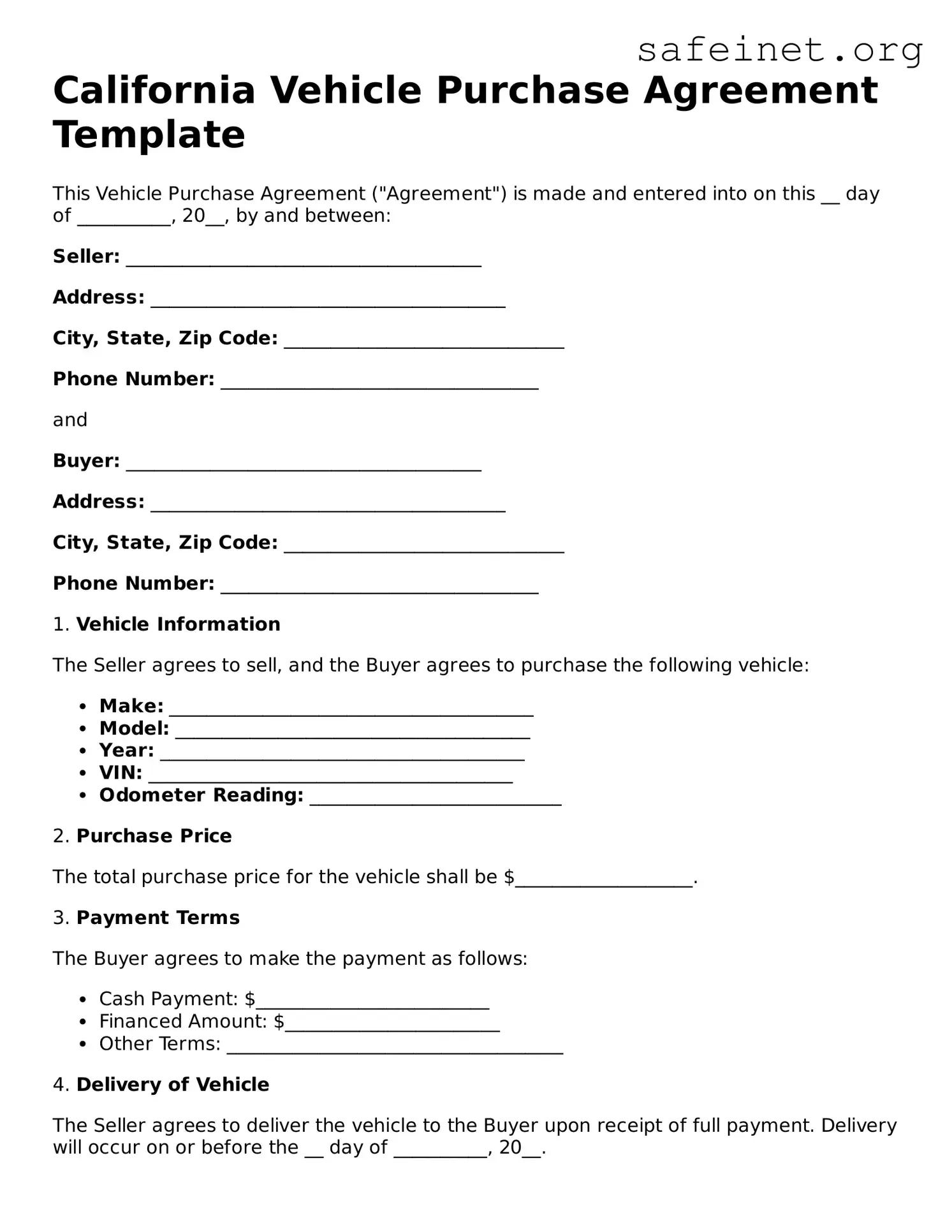What is a California Vehicle Purchase Agreement?
A California Vehicle Purchase Agreement is a legal document that outlines the terms of a sale between the buyer and seller of a vehicle. It specifies details such as the vehicle’s make, model, identification number, purchase price, and any warranties or conditions that apply to the sale.
Why do I need a Vehicle Purchase Agreement?
This agreement protects both the buyer and seller by clearly defining the terms of the sale. Having a written document can prevent misunderstandings and disputes about the transaction in the future.
What information is typically included in the agreement?
The agreement usually includes the buyer's and seller's names, addresses, contact information, vehicle details (like the VIN, year, make, and model), sale price, payment method, and any agreements regarding warranties or repairs. It may also cover additional terms relevant to the sale.
Is the Vehicle Purchase Agreement required by law?
While not explicitly required by law, having a Vehicle Purchase Agreement is highly recommended. Many dealerships provide this form, and it helps formalize the transaction, making it easier to resolve any potential issues down the line.
Can I modify the Vehicle Purchase Agreement?
Yes, you can modify the agreement to reflect the specifics of your sale. However, both parties must agree to the changes. It's important to ensure that changes do not contradict any state laws or regulations governing vehicle sales.
Do I need to have the agreement notarized?
No, notarization is not a legal requirement for a Vehicle Purchase Agreement in California. However, having it notarized can lend additional credibility to the document and may be beneficial in case of future disputes.
What happens if one party does not fulfill their responsibilities under the agreement?
If one party fails to uphold their end of the agreement, the other party may have legal grounds to seek a resolution. This can involve mediation, arbitration, or taking the matter to court, depending on the severity of the breach.
How does the Vehicle Purchase Agreement affect registration?
The Vehicle Purchase Agreement is often needed to complete the vehicle registration process with the Department of Motor Vehicles (DMV) in California. The DMV requires proof of sale documentation when transferring ownership of a vehicle.
Can a Vehicle Purchase Agreement be used if I am buying a used vehicle from a private seller?
Yes, a Vehicle Purchase Agreement is suitable for private sales as well as dealership transactions. If you are buying a used vehicle from an individual seller, having this agreement is essential for protecting your interests.
Where can I obtain a Vehicle Purchase Agreement form?
You can find a Vehicle Purchase Agreement form online through various legal template websites or by consulting local dealerships who often provide their own versions. Make sure to review the document carefully to ensure it meets your needs and complies with California state laws.
